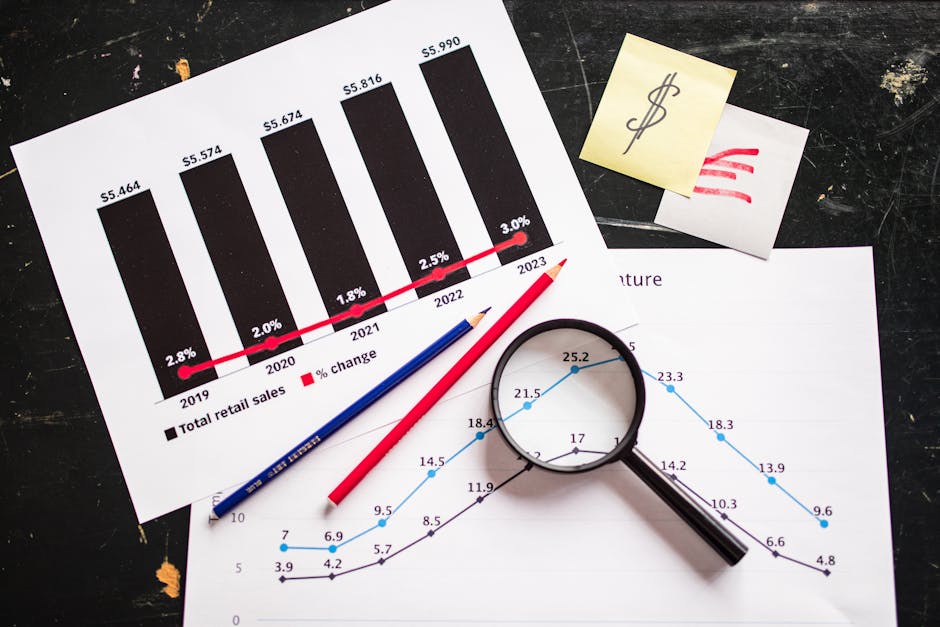Scaling your B2B SaaS sales team often feels less like climbing a hill and more like navigating a maze—full of unexpected dead ends (data chaos, team silos, missed deals) and, if you’re lucky, the occasional clear path. At Your HS Expert, we’ve worked with over a hundred B2B SaaS companies to replace “reactive” sales pipelines with intentional, scalable processes inside HubSpot. In this guide, we share the actionable steps, mindsets, and HubSpot strategies that drive consistency and revenue growth as you scale—from your first 10 sales reps to your 200th employee.

1. Strong Foundations: Define Pipeline Stages That Match Your Real Buyer’s Journey
Generic, one-size-fits-all sales pipelines are the enemy of SaaS growth. The best B2B SaaS teams obsessively map pipeline stages to their specific buying journey—right down to exact buying obstacles, decision points, and handoffs between marketing, sales, and customer success.
- Awareness/Connect: Where leads are qualified, typically via inbound strategies, cold outreach, or event follows-up. Ensure that every lead is tagged accurately in HubSpot.
- Discovery/Appointment Set: Initial meetings and calls, leveraging HubSpot’s meeting links and calendar sync to avoid the back-and-forth.
- Evaluation: Solution demos, customization conversations, and technical evaluations. Capture buyer questions and pain points with custom properties and notes for team alignment.
- Decision: Proposal sent, pricing discussions, legal/procurement review. Proactively define clear HubSpot stages for “Legal Review” or “Procurement Approval” if your deal cycles require it.
- Closed Won/Lost: Ensure every won deal is celebrated and every loss triggers a standardized post-mortem (and is coded accurately in HubSpot for win/loss analysis).
Pro tip: In our HubSpot audits, we often discover misaligned stages that cause deals to get stuck for weeks, hide real forecasting issues, and lead to endless finger-pointing between teams. Consistent definitions (agreed across marketing, sales, and CS) are non-negotiable for scalable growth.
2. Automate Pipeline Hygiene: Don’t Let Deals Slip Through the Cracks
Manual data entry and neglected deals are the death of accurate pipeline forecasting. Use HubSpot automations to auto-close, escalate, or flag deals that aren’t progressing, so you never lose sight of what matters most.

- Auto-Close Stagnant Deals: Create workflows that automatically close deals that have been stuck in decision stages for too long.
- Deal Owner Alerts: Use workflow-based reminders to nudge sales reps if deals remain idle—reducing lag and improving overall sales velocity.
- Trigger-Based Stage Progression: Set properties in HubSpot, like “Demo Held” or “Decision Maker Identified,” to automatically advance deal stages, cutting down on manual updates and data errors.
We’ve seen teams recover 10+ hours a month and improve forecasting by simply keeping their pipelines clean—making it easier to spot future bottlenecks and address them before they impact revenue.
3. Build Adaptive Sales Sequences—Not Rigid Scripts
The most successful SaaS teams create sales sequences in HubSpot that adjust dynamically based on persona, prospect behavior, and product use case. That means:
- Persona-Based Branching: Custom email templates, call scripts, and content tailored by role (e.g., technical buyer vs. economic buyer).
- Behavioral Triggers: Using engagement signals (opens, clicks, past demo activity) to personalize next steps rather than sticking to fixed playbooks.
- HubSpot Playbooks: Use playbooks to deliver contextual guidance to reps at each stage, particularly for new hires who need structure to ramp quickly.
This approach not only improves close rates, but also delivers a buyer experience that feels consultative, not scripted.

4. Train for Adoption and Immediate ROI
Even the perfect pipeline design will flop if your team isn’t bought in. We’ve found the fastest path to adoption is through role-based training with a focus on immediate, real-world wins. Here’s what that looks like in practice:
- Initial Training (Week 1): Core workflow navigation, using automated meeting tools, and leveraging personal pipeline views. Focus on practical shortcuts and how the system saves reps time, not just theory or slide decks.
- Advanced Training (Week 2+): Managers get deep dives into forecasting, reporting, and optimization; reps learn how to manage properties (like decision date, deal source) for cleaner reporting—all mapped to your custom pipeline.
This keeps the “why” of your system front and center, builds buy-in, and quickly turns new processes into habits.
5. Optimize, Audit, and Iterate with Data (Not Gut Instinct)
Pipelines are living systems. To scale, you need regular tune-ups—monthly at minimum. Here’s how we help teams assess and improve:
- Dashboard-Driven Reviews: Use HubSpot’s stage-to-stage conversion, deal duration, and deal source reports to pinpoint bottlenecks and where deals most often die.
- Prioritize Highest-Impact Deals: Empower managers to segment for high value or “at risk” deals, so teams spend their time where it truly matters. This is easily managed in HubSpot with filtered views and custom reports.
- A/B Test and Adjust: Make small, monthly changes to messaging, hand-off criteria, or workflow automation—and review the impact the next cycle. True pipeline health is achieved through iteration, not one-and-done projects.

6. Integrate Systems—Don’t Operate in Silos
Scalable growth happens when marketing, sales, and customer success are all rowing in unison. That means integrating HubSpot with essential sales and support tools (think Slack, Google Workspace, sometimes Salesforce, and even Jira for ticketing). Here’s the kind of integration work that moves the needle:
- Lead Routing Automation: Instant handoff of MQLs to the right rep based on territory, ICP fit, or even prior engagement—preventing the dreaded “black hole” effect.
- Closed-Loop Reporting: Connecting the dots between marketing attribution in HubSpot and real revenue outcomes in sales pipelines, so everyone can trust the data.
- Tickets and Support Integration: For SaaS teams, surface support tickets and CSAT scores within HubSpot records—arming reps with context at every stage of the buyer and customer journey.
We’ve routinely seen messy tech stacks kill momentum and slow down scaling sales orgs. Every integration you nail is one less roadblock to growth.
7. Keep Score: Metrics That Matter for SaaS Pipeline Scaling
The right metrics keep your pipeline honest and your growth plan grounded. In HubSpot, prioritize these:
- Stage-to-Stage Conversion Rates: Are you losing leads at the same point every month? Zoom in, run root cause analysis, and address with targeted training or process changes.
- Deal Velocity: How long does it take to move from connect to close? Benchmark, then optimize—slow deals drain resources and create inaccurate forecasts.
- Lead Response Time: Especially critical in SaaS, swift lead response correlates directly with close rates (HubSpot automations can route and alert within seconds).
- Pipeline Coverage Ratio: The value of open deals vs. target; balance priorities so your team avoids feast-or-famine cycles.

Final Checklist for Scaling With Confidence
- ✅ Every stage defined and aligned with your true buyer’s journey
- ✅ Automation keeping your pipeline tidy (auto-close, reminders, auto-assignments)
- ✅ Sales sequences adaptive and persona-specific
- ✅ Monthly pipeline and process audits—iteration over intuition
- ✅ Seamless integrations powering real cross-team collaboration
The difference between teams who plateau and those who scale up and to the right? Intentional process, not accidental growth. At Your HS Expert, we help SaaS teams simplify, automate, and scale their entire HubSpot experience—so your people, processes, and data stay in sync as your revenue grows. If pipeline chaos (or missed ROI) is costing you sleep, book a free HubSpot Discovery Session with our team and let’s turn your pipeline into your growth engine.
Frequently Asked Questions: Building Scalable Sales Pipelines in HubSpot
- What’s the biggest mistake SaaS teams make when building a sales pipeline in HubSpot?
- Far and away, it’s trying to force-fit generic CRM pipeline templates onto unique SaaS buyer journeys. Teams end up with extra stages no one uses, unclear handoffs, and muddy data. Customizing your pipeline to your real, current process is key.
- How often should we audit our sales pipeline?
- At a minimum, monthly. High-growth SaaS organizations often add new stages, adjust criteria, or update automation each quarter based on what the numbers tell them.
- What HubSpot features help automate pipeline management?
- Deal-based workflows (for auto-closing, reminders, lead routing), custom properties that trigger stage progression, and integrations with marketing/sales/support tools are the most impactful for our clients.
- Should marketing and customer success teams have access to the sales pipeline?
- Yes—shared views and permissions promote alignment across the revenue team. For SaaS companies, aligning all go-to-market teams in HubSpot is a proven way to eliminate silos and drive growth.
- How do we balance automation with a personal touch?
- Automate the repetitive (data routing, stage progression, reminders), but personalize messaging and demos. The balance is what makes SaaS sales both efficient and human.

